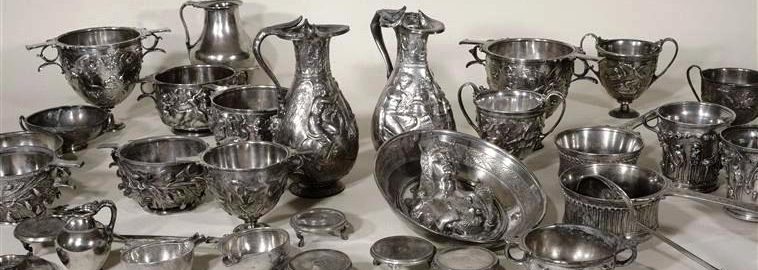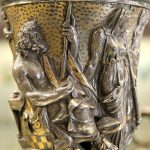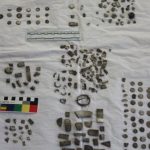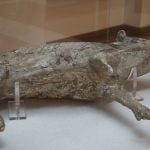Almost everyone has heard of Pompeii and Herculaneum – ancient cities that have been buried under the layer of ashes of Vesuvius – a volcano that erupted in 79 CE.
Boscoreale, located north of Pompeii, served as a rich suburbs of this city, where nobles built their villas. It one of such villas in 1895 a unique find was done – over 1000 golden objects and a silver tableware which totally weighted 30 kg!
The discovery was made by accidentally looking into the ash-filled cistern in which wine was once stored.
The villa probably belonged to a wealthy member of the imperial family. Unfortunately, we do not know him by name. However, on some items, Maxima is repeated many times.
We can assume that the owner of this treasure, escaping from the volcano, recommended the servant, or personally hid valuable items to protect them from destruction or theft. He probably believed that when the danger passed, he would be able to enjoy them again. Unfortunately, since the treasure remained intact in its hiding place until it was discovered in the 19th century, we can guess how the rich man ended up.
Unusual items, immediately after the discovery, were transported to France to Baron Edmund Rothschild. He left a few items for himself, while the rest was given to the Louvre Museum, where we can see them to this day.
The treasury includes vessels from various periods. Silverware can be divided into dishes serving for serving and drinking drinks called argentum potorium (various types of skyphos – cups, cups, bowls, scoops, sieves and stands for containers) and dishes for dishes – argentum escarium (plates, pitchers, dishes, all kinds of dishes, salt shakers).
The priceless find from Boscoreale shows how splendor and richness lived the social heights of ancient Rome. How ostentatiously it was carried out with it, which was constantly stigmatized by ancient moralizers.
Referring to the figural decoration on found masterpieces of craft art, we can observe that in society the patterns of Hellenic culture and the Greek understanding of beauty were firmly rooted, and the tradition of the family as the guarantor of social order was cultivated. We can see a couple on the cups, on another we see a woman dressed in elephant skin which is a personification of Africa, on another cup we see the emperor Augustus receiving tribute to the barbarians, on another we see the Emperor Tiberius triumphant, you can also see the hellenistic personification of the winged goddesses who sacrifice. On one skyphos we see Bacchus presented as a child riding on the panther, besides numerous animal and plant motifs were depicted. One of the most original artifacts are two cups on which the skeletons of famous Greek poets and philosophers are depicted.
The treasure from Boscoreale gives us an idea of how the tableware in the early empire looked like and how it accompanied its splendor.
- Roman salt shaker
- A plate with the personification of Africa
- Roman cup
- Skyphos showing the triumph of Titus
- Skyfos with the portrayal of August













